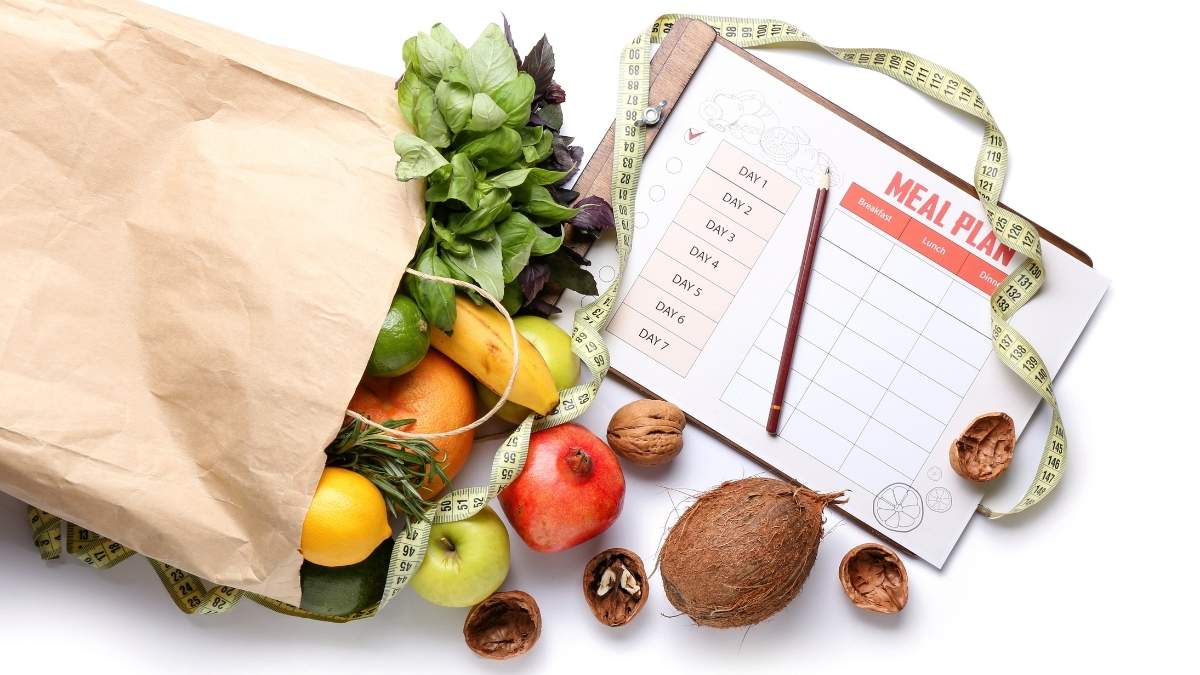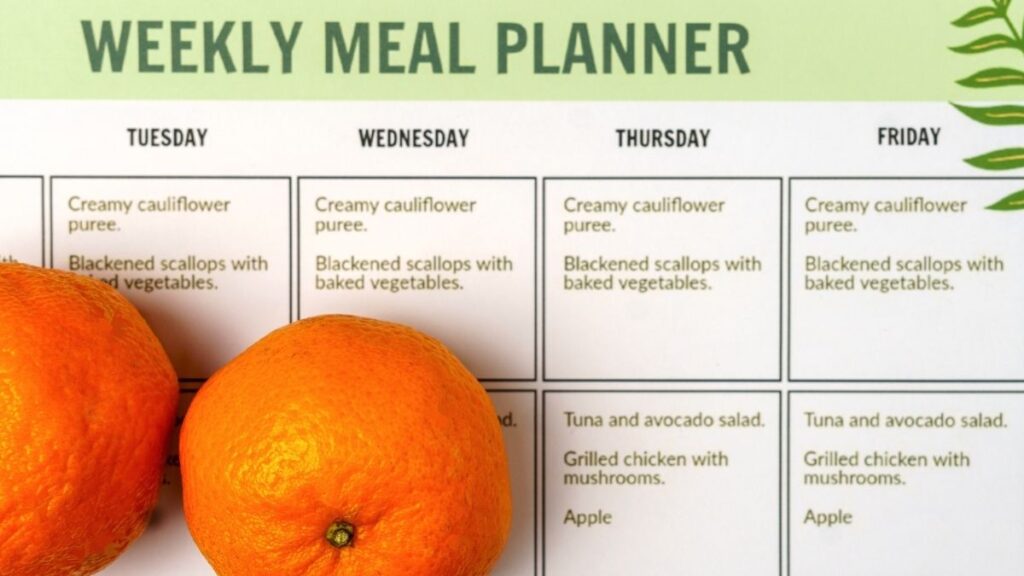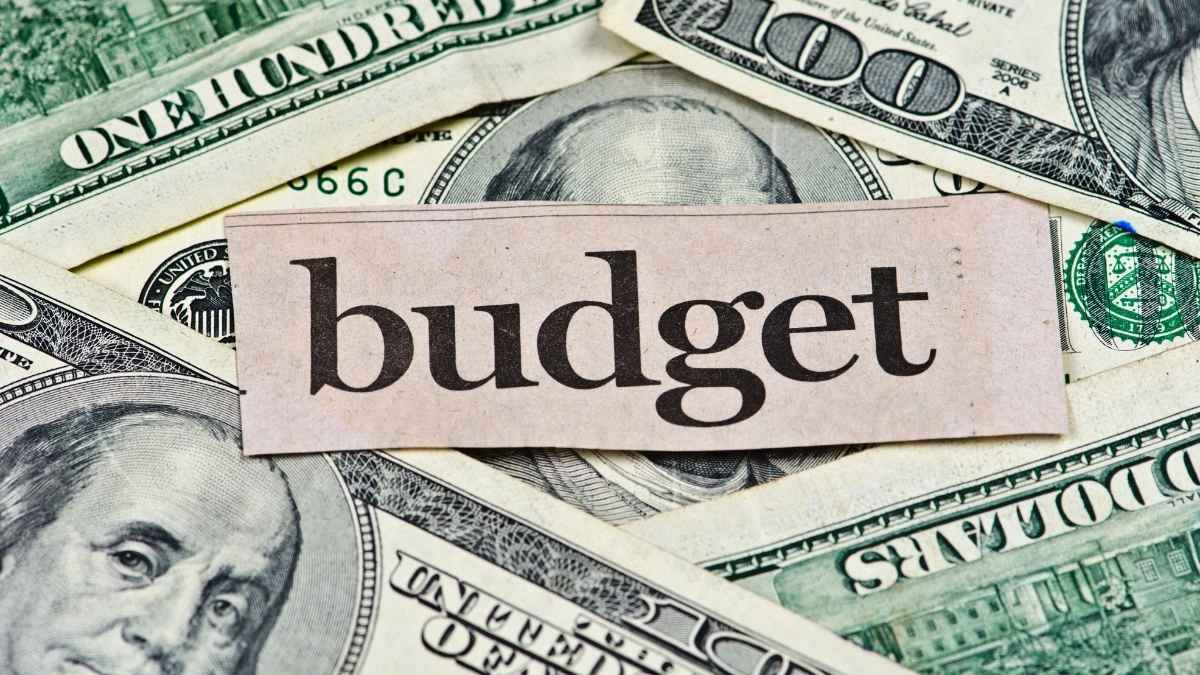You don’t need to spend $200 a week on organic superfoods to protect your heart.
That’s what the wellness industry wants you to believe. They sell expensive acai bowls, $15 bottles of cold-pressed juice, and $8 bags of ancient grains. Meanwhile, your grocery budget gets smaller and your health anxiety gets bigger.
Here’s the truth: a heart healthy diet on a budget costs less than eating junk food. The foods that actually protect your arteries cost $2 per pound, not $20. Oats, beans, eggs, and seasonal vegetables work better than any trendy superfood.
You’ve been told that good health costs a fortune. That healthy food tastes boring. That you need special ingredients from expensive stores to lower your cholesterol and blood pressure.
The Truth About Heart-Healthy Eating Costs

You think eating for your heart means spending more money. That’s what the food industry wants you to believe. But here’s what they don’t tell you: budget-friendly heart health is totally possible.
The Real Cost Comparison
A heart-healthy diet costs just $1.50 more per day than the standard American diet. That’s $547 per year. Sounds like a lot? Wait until you see the other side.
Heart disease treatment costs $18,953 per person each year. Prevention saves you over $18,000 annually. You do the math.
Expensive Health Foods You Don’t Need
Skip the $12 acai bowls and $8 kombucha bottles. Your heart doesn’t care about trendy superfoods. These affordable heart healthy foods work just as well:
- Oats: $0.13 per serving
- Dried beans: $0.28 per serving
- Bananas: $0.19 each
- Canned salmon: $1.25 per serving
Processed vs. Whole Foods Reality Check
That $3 frozen dinner? It’s not cheaper than real food. Here’s proof:
A homemade bean and rice bowl costs $1.85. It has more fiber, less sodium, and zero preservatives. The frozen version costs $3.49 and comes loaded with chemicals your heart hates.
Your Heart-Healthy Grocery List
These foods cost less than junk food:
- Whole grain pasta
- Frozen vegetables (just as nutritious as fresh)
- Eggs
- Peanut butter
- Brown rice
- Seasonal fruits
The Bottom Line
You’re already spending money on food. Heart disease just makes you spend more later. Way more.
Start with one swap per week. Replace chips with nuts. Swap white bread for whole grain. Your wallet won’t notice the difference, but your heart will thank you.
The expensive part isn’t the food. It’s believing you can’t afford to eat well. You can’t afford not to.
Smart Shopping Strategies for Heart Health

You want to eat better for your heart, but grocery prices keep going up. Here’s how to build a heart healthy diet on a budget without clipping a million coupons or driving to five different stores.
Shop the Seasons
Strawberries cost $5 per pound in January. They’re $1.99 in June. Your heart gets the same benefits either way. Buy what’s in season and save 60% on produce.
Winter: Apples, oranges, sweet potatoes, cabbage
Spring: Asparagus, spinach, peas
Summer: Berries, tomatoes, zucchini, corn
Fall: Squash, Brussels sprouts, pears
Frozen Beats Fresh (Sometimes)
Frozen broccoli has more vitamin C than fresh broccoli that sat in a truck for a week. It costs half as much and lasts three months. Frozen berries work great in oatmeal and cost $2.99 instead of $6.99.
Fresh is better for salads. Frozen wins for cooking.
Master the Bulk Bins
Oats from bulk bins cost $1.29 per pound. The same oats in a fancy container cost $4.99. You’re paying $3.70 for cardboard packaging.
Buy these in bulk: brown rice, quinoa, lentils, nuts, dried beans. Bring your own containers if the store allows it.
Read Unit Prices, Not Package Prices
The big box isn’t always cheaper. Look at the small print on shelf tags. It shows cost per ounce or pound. A 12-ounce can for $1.99 costs more per ounce than an 8-ounce can for $1.29.
Your 5-Minute Weekly Plan
Sunday: Check sales flyers online
Monday: Plan 3 dinners using sale items
Tuesday: Make your shopping list
Wednesday: Shop (least crowded day)
Thursday-Sunday: Cook what you planned
Generic vs. Brand Names
Canned tomatoes are canned tomatoes. The generic version costs 40% less and tastes the same. Save money on basics like rice, beans, pasta, and frozen vegetables.
Spend extra on: olive oil, nuts, fish. Quality matters here.
Best Times to Shop
Wednesday mornings: New sales start, stores are empty
Sunday evenings: Meat and produce get marked down
Month-end: Stores clear inventory with deeper discounts
How to Read Sales Flyers
Look for these words: “Buy 2, Get 1 Free” (33% off), “Manager’s Special” (expires soon, big savings), “10 for $10” (usually means $1 each, buy as many as you want).
Stock Up Smart
When canned salmon goes on sale, buy 6 cans. When olive oil hits 50% off, buy 2 bottles. These budget-friendly heart health staples don’t expire quickly.
Don’t stock up on: fresh produce, dairy, bread. They’ll spoil before you use them.
Budget-Friendly Heart-Healthy Meal Planning

You stare at your grocery budget and wonder how you’ll afford to eat well for your heart. The good news? Cheap heart healthy meals start with smart planning, not expensive ingredients.
Build Around What’s On Sale
Check store flyers before planning meals. Chicken thighs on sale? Plan three chicken dinners. Dried beans 50% off? Make it your protein star for the week.
Your heart doesn’t care if you eat salmon on Tuesday or Thursday. It cares that you eat it regularly and affordably.
The Sunday Batch Cooking System
Spend 2 hours on Sunday. Cook enough food for most of the week. Here’s what works:
Big Batch Bean Chili (serves 8, $1.25 per serving)
- 2 cups dried beans ($1.50)
- 1 can diced tomatoes ($0.89)
- 1 onion ($0.50)
- Spices you already have
Cook once, eat four times. Freeze half for next week.
Vegetable Soup Base (serves 6, $1.10 per serving)
- Frozen mixed vegetables ($1.69)
- Vegetable broth ($1.99)
- Brown rice ($0.50)
- Whatever vegetables are marked down
Add different proteins each time you reheat it.
Sample Week That Costs $28 for Two People
Monday: Bean chili with cornbread
Tuesday: Egg and vegetable fried rice (using leftover rice)
Wednesday: Leftover chili over baked sweet potato
Thursday: Tuna pasta salad with frozen peas
Friday: Vegetable soup with whole grain bread
Saturday: Scrambled eggs with leftover vegetables
Sunday: Batch cook for next week
Make Expensive Ingredients Go Further
You can’t afford to sprinkle walnuts on everything. But you can afford to buy them once and use them smart.
$6 bag of walnuts = 16 servings at $0.38 each. Chop them up and add just 1 tablespoon to oatmeal or salads. You get the heart benefits without breaking your budget.
Same with olive oil. Buy the good stuff, but use it like liquid gold. Two tablespoons costs $0.50 and transforms boring vegetables into something you actually want to eat.
Turn Leftovers Into New Meals
Leftover bean chili becomes:
- Chili mac with whole wheat pasta
- Baked potato topping
- Omelet filling
- Soup base with added broth
Leftover roasted vegetables become:
- Pasta sauce
- Soup ingredients
- Omelet fillings
- Grain bowl toppings
The Real Money Saver
Planning prevents panic buying. When you know what’s for dinner, you don’t grab expensive convenience foods or order takeout.
A heart healthy diet on a budget needs just three things: a plan, basic cooking skills, and ingredients that work multiple ways.
Start Small
Plan just three dinners this week. Cook one big batch recipe on Sunday. Use leftovers twice instead of throwing them away.
Your heart will get better nutrition, and your wallet will thank you. That’s better than any expensive superfood.
Kitchen Swaps That Save Money and Your Heart

You want to eat better for your heart, but those “superfoods” cost more than your car payment. Here’s the truth: affordable heart healthy foods work just as well as expensive ones. Your heart can’t tell the difference between a $12 acai bowl and a $2 bowl of oats with berries.
Seeds Beat Expensive Nuts
Almonds cost $8 per pound. Sunflower seeds cost $3 per pound and give you the same healthy fats. Pumpkin seeds have more magnesium than most nuts and cost half as much.
Sprinkle them on salads, oatmeal, or yogurt. Your heart gets the same benefits for 60% less money.
Spice Up Your Life (And Ditch the Salt)
A $2 bottle of garlic powder lasts six months and makes everything taste better. Oregano, cumin, and paprika cost $1 each and replace the need for expensive flavor enhancers.
Salt makes your blood pressure go up. Spices make your food taste amazing and cost almost nothing per serving.
Smart Meat Choices
Chicken breast costs $6 per pound. Chicken thighs cost $2 per pound and have more flavor. Remove the skin and you get lean protein for one-third the price.
Ground turkey is cheaper than lean beef and works in tacos, chili, and pasta sauce. Your arteries can’t tell the difference.
Make Your Own Dressing
Bottled salad dressing costs $3 and contains sugar and preservatives. Mix olive oil, lemon juice, and garlic. You get better flavor and heart-healthy fats for $0.25 per serving.
Superfood Swaps That Actually Work
Chia seeds ($12/lb) → Ground flaxseed ($4/lb)
Same omega-3 benefits, easier to digest, costs less.
Quinoa ($6/lb) → Brown rice ($2/lb) or bulgur ($3/lb)
Same fiber, similar protein, way cheaper.
Fresh basil ($3 for tiny package) → Dried basil ($1 for months of use)
Fresh tastes better in some dishes, but dried works great in soups and sauces.
Store hummus ($4) → Homemade ($1.50)
Blend canned chickpeas, tahini, lemon, and garlic. Takes 5 minutes and tastes better.
The Real Win
These budget-friendly heart health swaps save $20-30 per week without sacrificing nutrition. That’s $1,200 per year you can spend on other things.
Your heart needs fiber, healthy fats, and lean protein. It doesn’t need fancy packaging or trendy names.
Start with one swap this week. Replace expensive nuts with seeds, or make your own hummus. Small changes add up to big savings and better heart health.
Weekly Meal Plans and Shopping Lists

You need cheap heart healthy meals for your family, but meal planning feels overwhelming. Here’s a complete 7-day plan that feeds a family of four for under $70. No fancy ingredients, no complicated recipes.
Your $67 Weekly Meal Plan
Monday
Breakfast: Oatmeal with banana slices
Lunch: Peanut butter and whole wheat bread
Dinner: Bean and vegetable chili with cornbread
Tuesday
Breakfast: Scrambled eggs with toast
Lunch: Leftover chili
Dinner: Baked chicken thighs with roasted sweet potatoes
Wednesday
Breakfast: Oatmeal with leftover fruit
Lunch: Tuna sandwich on whole wheat
Dinner: Chicken and vegetable stir-fry over brown rice
Thursday
Breakfast: Eggs with leftover vegetables
Lunch: Leftover stir-fry
Dinner: Lentil soup with whole grain bread
Friday
Breakfast: Oatmeal with peanut butter
Lunch: Leftover soup
Dinner: Pasta with tomato sauce and frozen vegetables
Saturday
Breakfast: Scrambled eggs
Lunch: Bean and cheese quesadillas
Dinner: Baked fish with steamed broccoli
Sunday
Breakfast: Oatmeal
Lunch: Leftover pasta
Dinner: Prep day – make next week’s chili and soup
Shopping List by Store Section
Produce ($18)
- Bananas (3 lbs) – $2.67
- Sweet potatoes (3 lbs) – $2.99
- Onions (2 lbs) – $1.98
- Carrots (2 lbs) – $1.49
- Frozen broccoli (2 bags) – $3.38
- Frozen mixed vegetables (2 bags) – $3.38
- Canned tomatoes (3 cans) – $2.67
Proteins ($22)
- Eggs (2 dozen) – $5.78
- Chicken thighs (3 lbs) – $5.97
- Canned tuna (4 cans) – $3.96
- Dried beans (2 lbs) – $2.58
- Dried lentils (1 lb) – $1.99
- Frozen fish fillets (1 lb) – $4.99
Pantry Items ($19)
- Oats (large container) – $2.49
- Brown rice (2 lbs) – $2.19
- Whole wheat bread (2 loaves) – $3.98
- Peanut butter – $2.99
- Pasta (2 boxes) – $1.98
- Vegetable oil – $2.49
- Basic spices – $2.99
Dairy ($8)
- Cheese (1 lb block) – $3.99
- Tortillas – $2.49
- Cornmeal – $1.49
Total: $67
Sunday Prep Schedule (2 Hours)
Hour 1:
- Cook big batch of beans (30 minutes active time)
- Wash and chop vegetables
- Cook brown rice for the week
Hour 2:
- Make chili using cooked beans
- Prepare lentil soup base
- Hard-boil eggs for quick breakfasts
Storage That Prevents Waste
Store cooked beans in freezer bags (flat for easy thawing). Cooked rice lasts 5 days in the fridge. Pre-chopped vegetables stay fresh in glass containers.
Keep bananas separate from other fruit. They make everything ripen faster.
Scale for Your Family Size
Family of 2: Cut everything in half, shop every 10 days
Family of 6: Add 50% more protein, double the vegetables
This heart healthy diet on a budget gives you variety without breaking the bank. Each meal costs under $3 per person and takes 30 minutes or less to prepare.
Cooking Techniques That Maximize Nutrition and Flavor

You bought affordable heart healthy foods, but now they taste boring or lose their nutrients in bad cooking. Simple cooking techniques can make cheap ingredients taste expensive and keep their heart-protecting powers intact.
Steam and Roast for Maximum Nutrients
Boiling vegetables kills 50% of their vitamins. Steaming keeps 90% of nutrients locked in. Just add an inch of water to a pot, insert a steamer basket, and cover. Done in 5-8 minutes.
Roasting makes vegetables taste like candy. Toss frozen broccoli with a little olive oil and salt. Roast at 425°F for 20 minutes. The edges get crispy and sweet.
Make Your Oil Work Harder
Don’t waste expensive olive oil by cooking with high heat. It burns and loses its heart benefits. Use it for finishing dishes or salad dressings.
For cooking, use a small amount of regular oil. One tablespoon costs $0.15 and coats a whole pan of vegetables.
Build Flavor Without Breaking the Bank
Save vegetable scraps in a freezer bag. When it’s full, simmer them in water for free vegetable broth. Onion peels, carrot tops, and celery leaves make rich stock.
Brown your vegetables before adding liquid. This one step makes cheap ingredients taste like restaurant food. Heat the pan, add vegetables, and don’t stir for 3-4 minutes. The browning creates deep flavors.
Master Dried Beans
Soak beans overnight in cold water. Drain, then simmer in fresh water for 1-2 hours. Don’t add salt until the last 15 minutes or they won’t get tender.
Cook a big batch and freeze portions. Homemade beans cost $0.28 per serving and taste better than canned.
Batch Cooking That Actually Works
Roast a whole sheet pan of vegetables on Sunday. Use them in salads, omelets, and pasta all week. They reheat better than raw vegetables that got soggy.
Cook grains in big batches too. Brown rice, quinoa, and bulgur keep for 5 days in the fridge.
Storage That Saves Money
Store bulk purchases in airtight containers. Flour, rice, and beans stay fresh for months. A $2 container prevents $20 worth of food from going stale.
Keep herbs fresh by treating them like flowers. Put stems in water and cover leaves with a plastic bag.
These budget-friendly heart health techniques turn basic ingredients into meals you actually want to eat. Good technique costs nothing extra but makes everything taste better.
Conclusion
Your heart healthy diet on a budget doesn’t need expensive superfoods or complicated recipes. The foods that protect your heart cost less than processed junk food. Oats, beans, eggs, and seasonal vegetables work better than any trendy supplement.
Smart shopping saves more money than extreme couponing. Buy what’s on sale, shop the bulk bins, and cook in batches. These simple habits cut your grocery bill by $30-50 per month while improving your health.
Simple cooking methods work best. Steam your vegetables, roast them with a little oil, or add them to soups and stews. Your heart needs nutrients, not fancy presentation.
Small changes add up fast. Replace chips with nuts one week. Swap white bread for whole grain the next. Each change makes your heart stronger and your wallet heavier.
Affordable heart healthy foods are everywhere once you know what to look for. You don’t need to shop at expensive health food stores or follow complicated meal plans.
Start with one or two affordable swaps this week and build your heart-healthy, budget-friendly routine gradually. Your heart will thank you, and your budget will survive.
Good health doesn’t have to cost a fortune. It just takes a plan.


